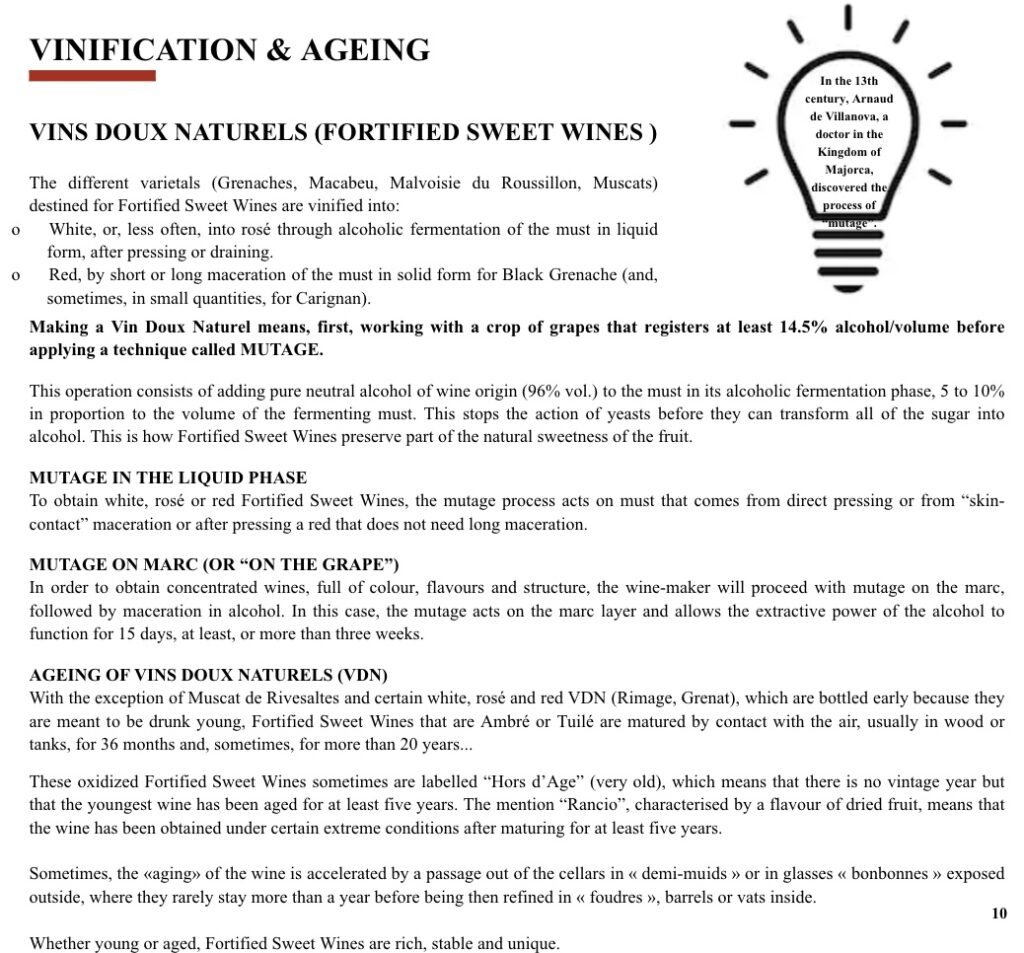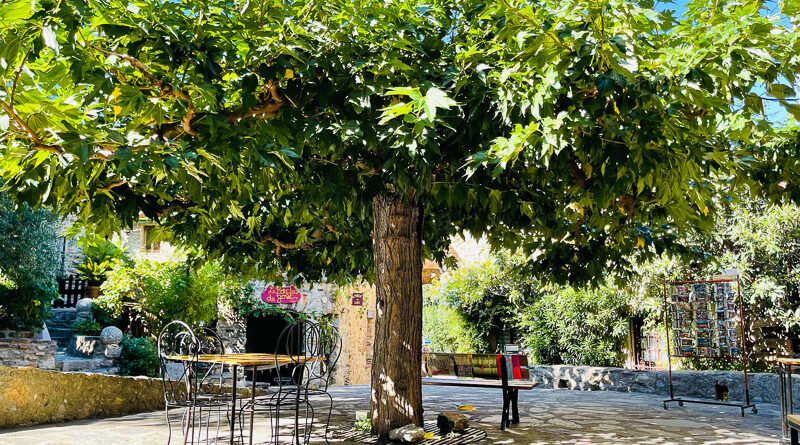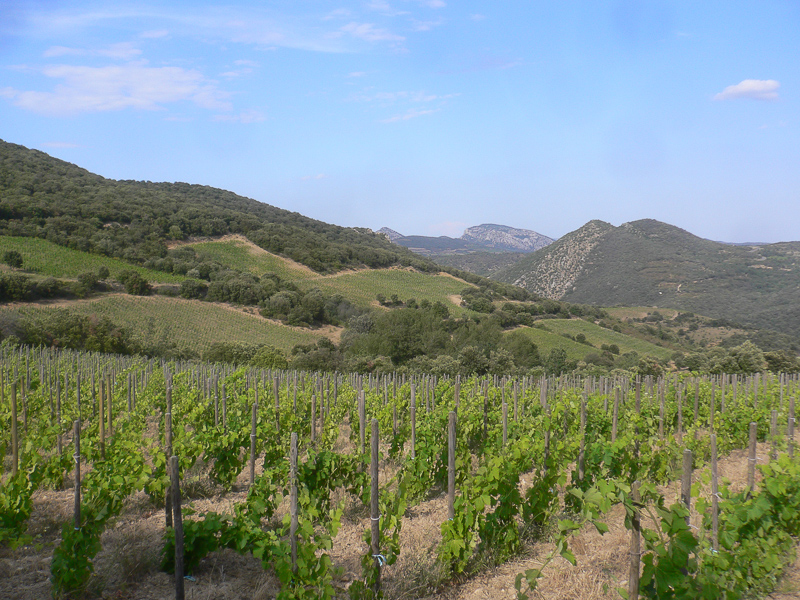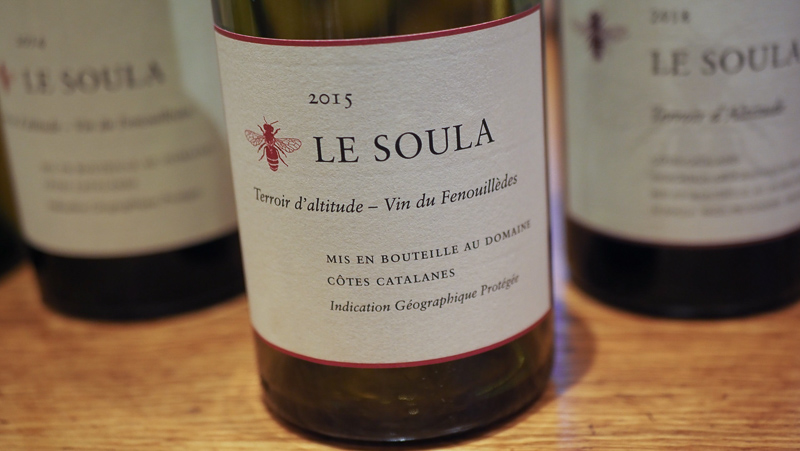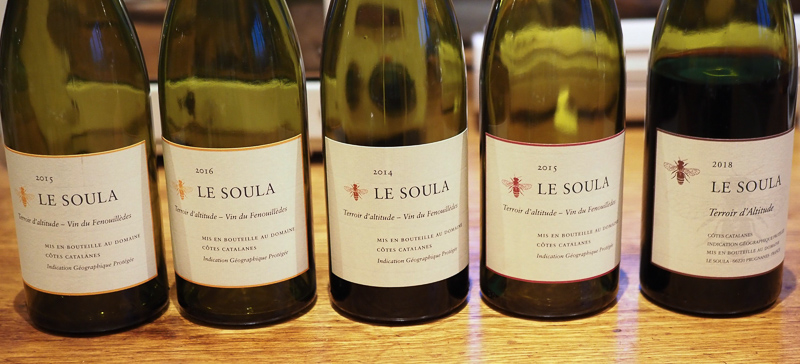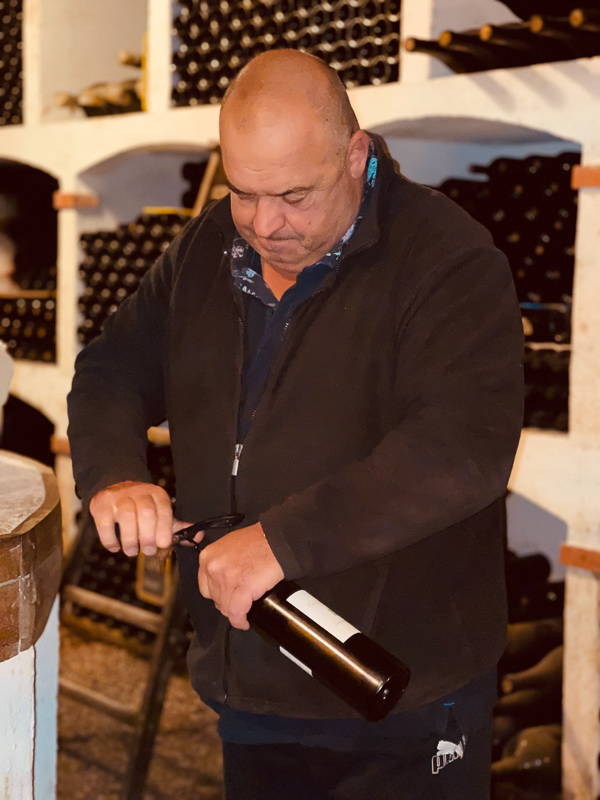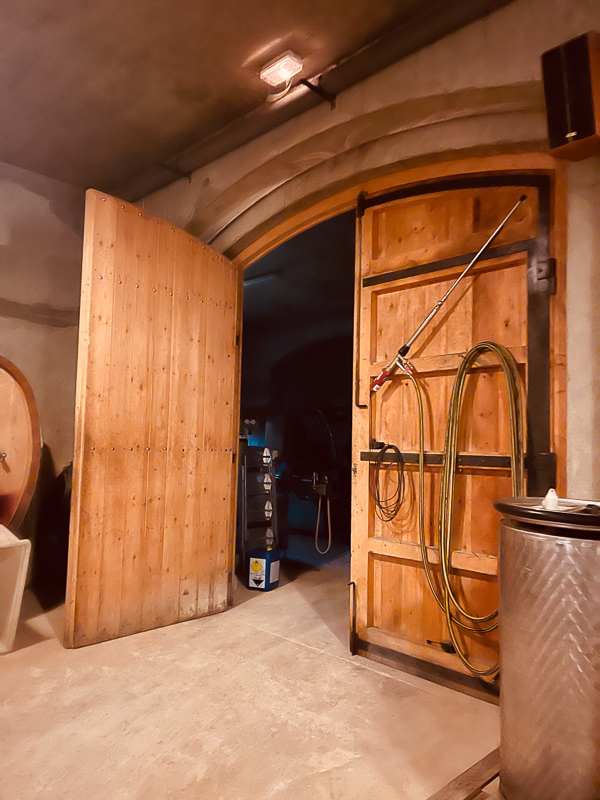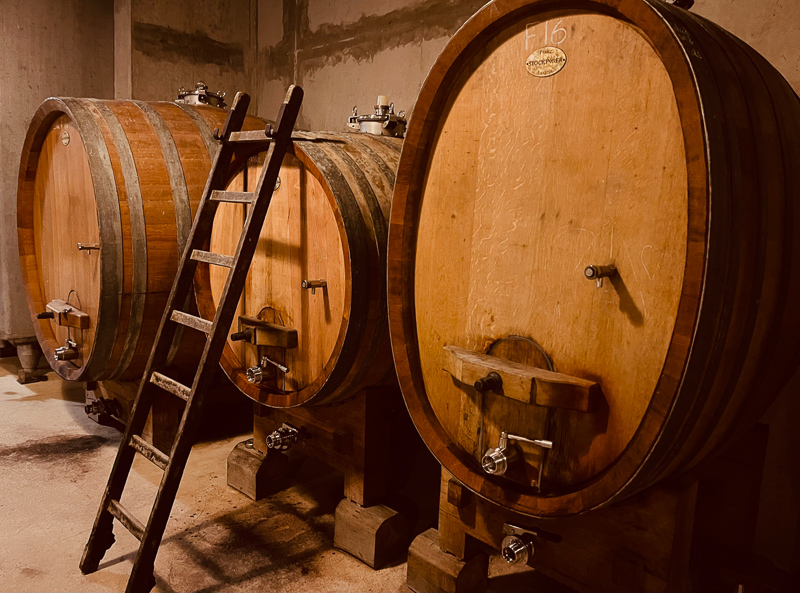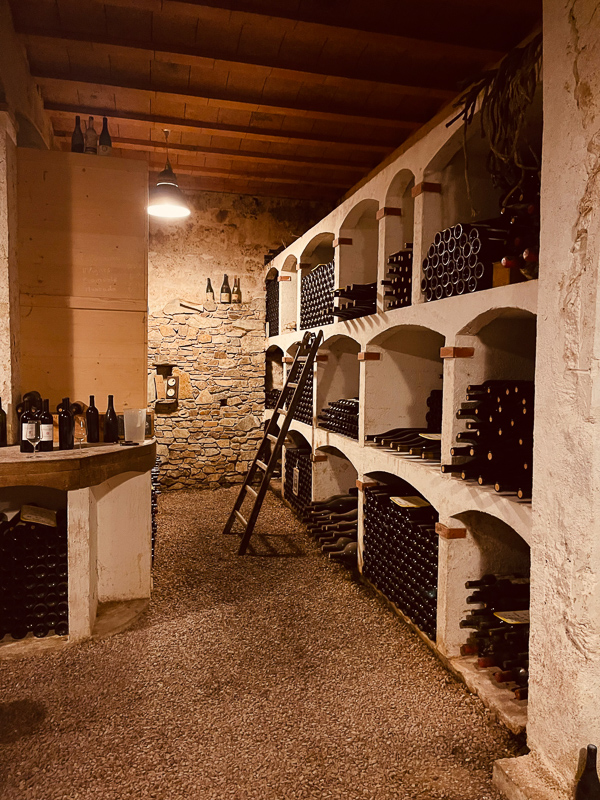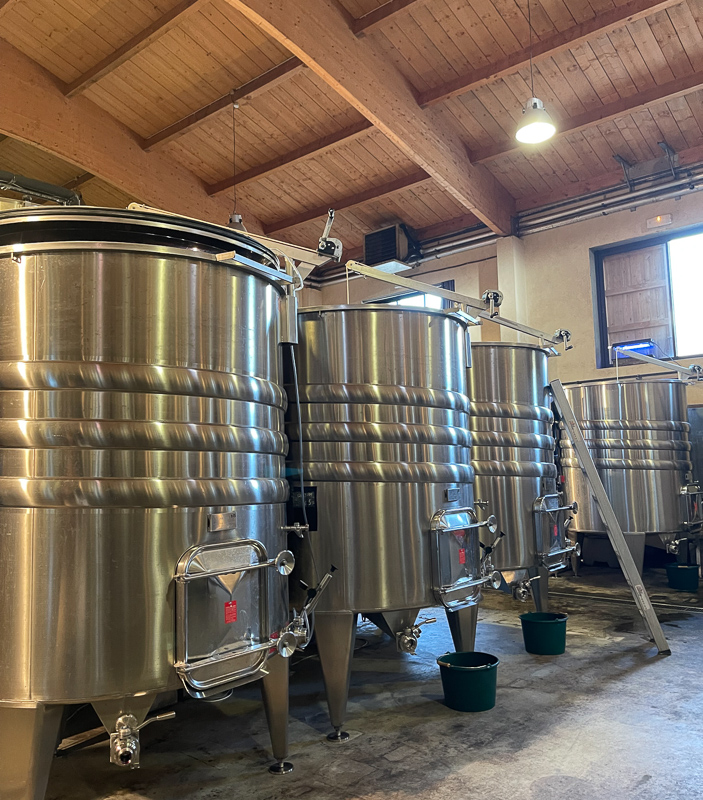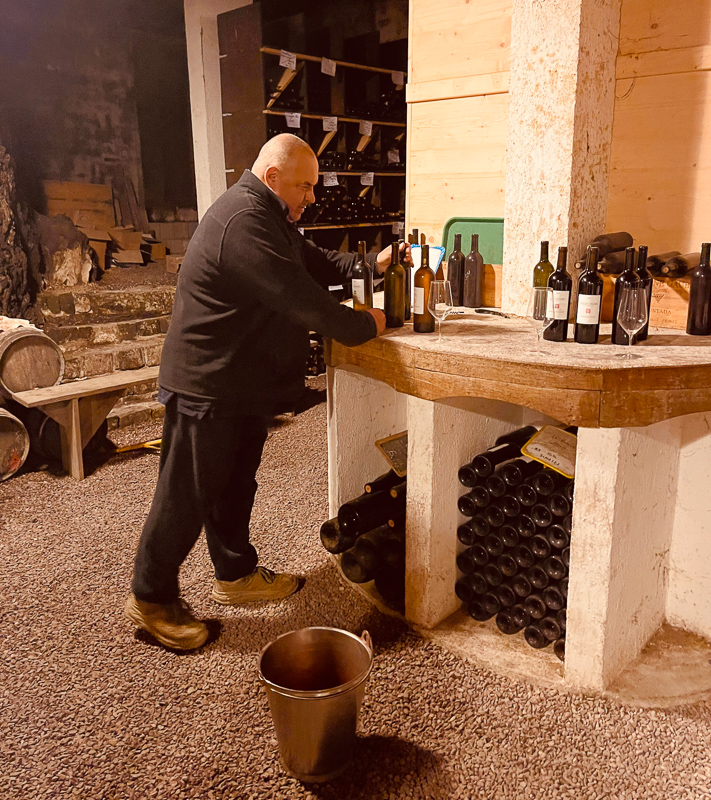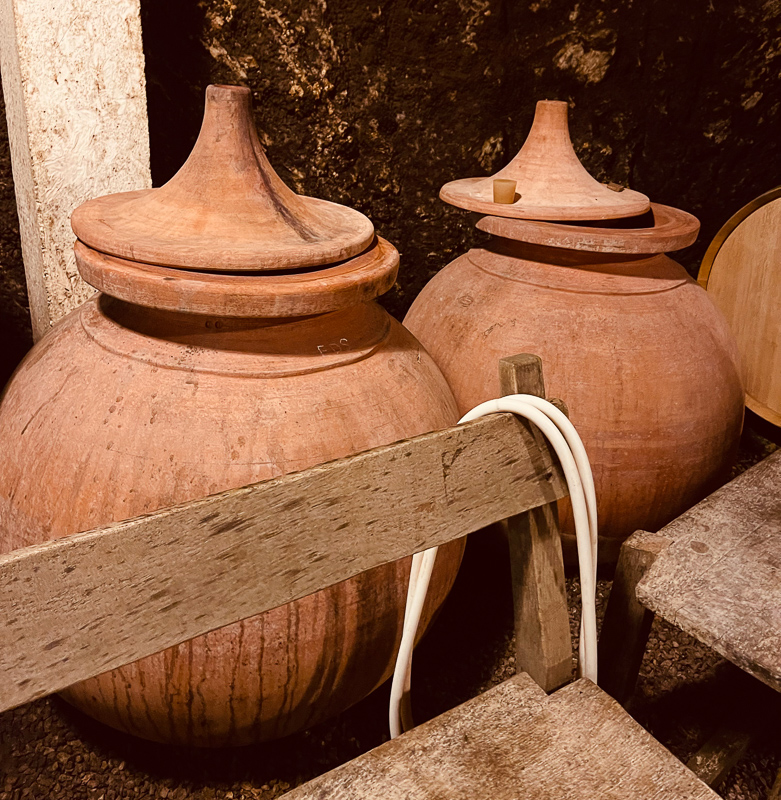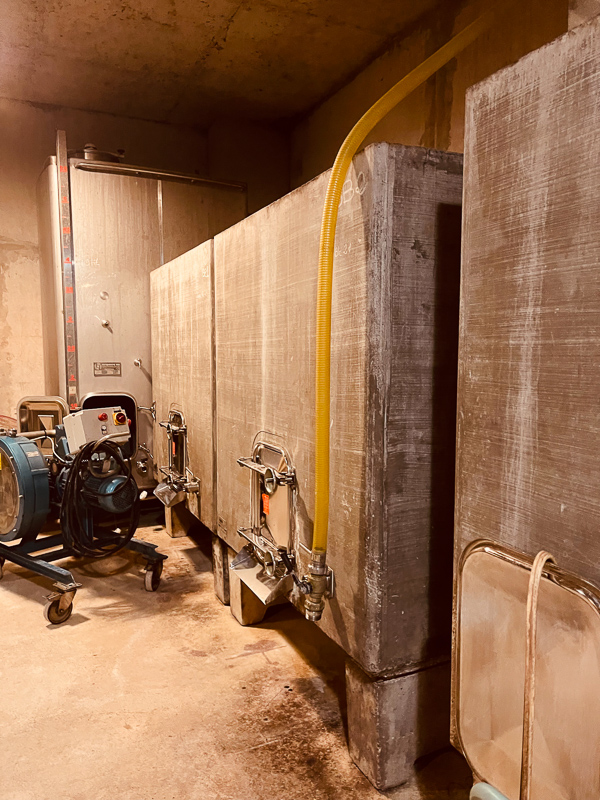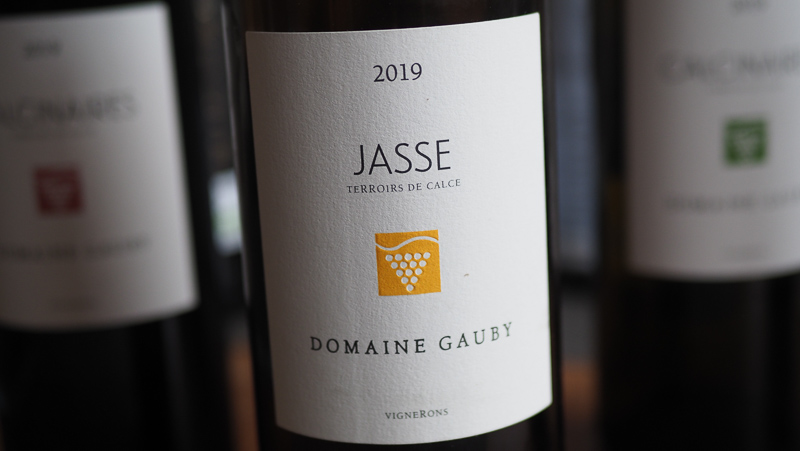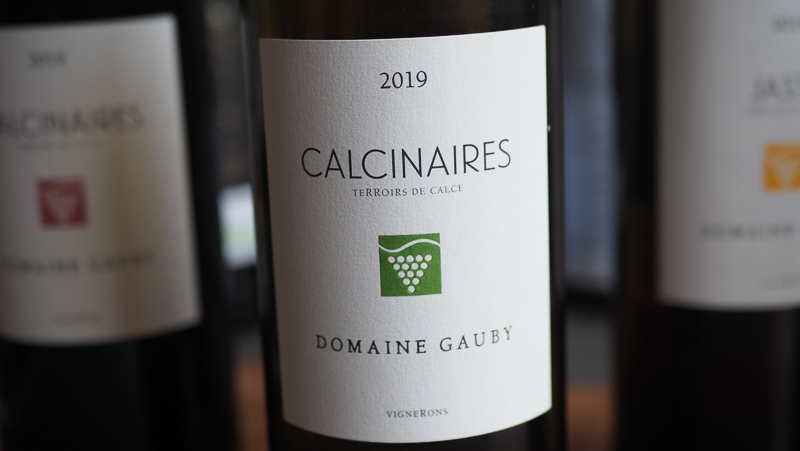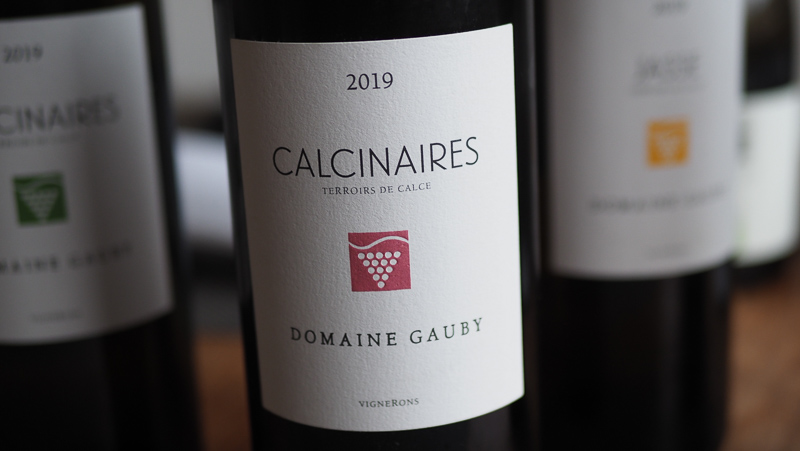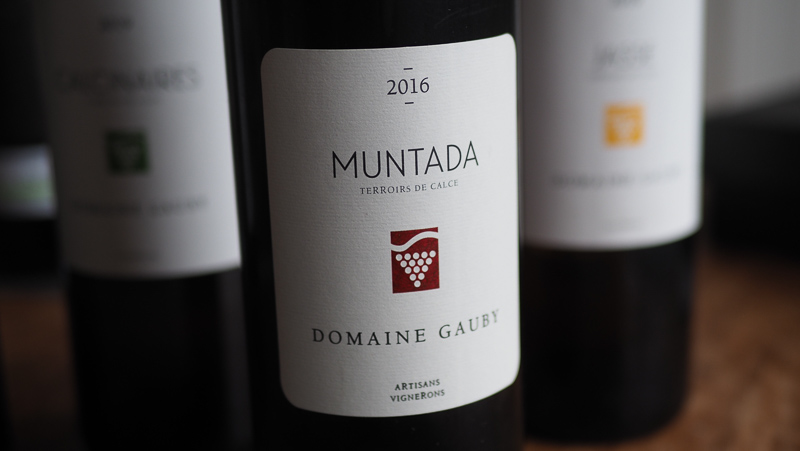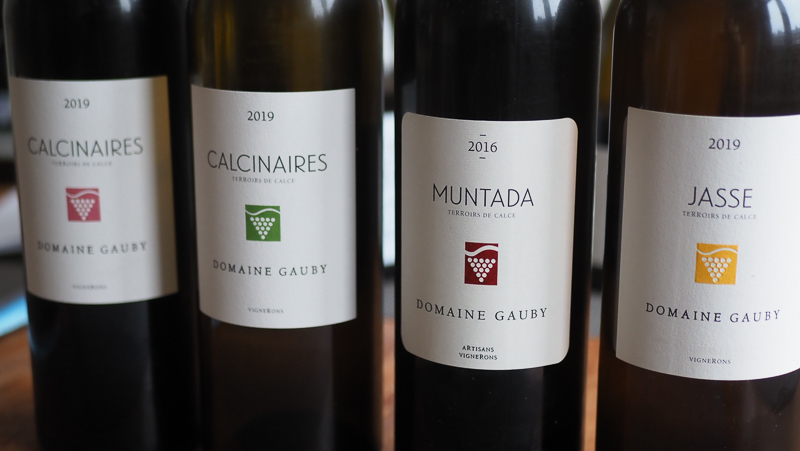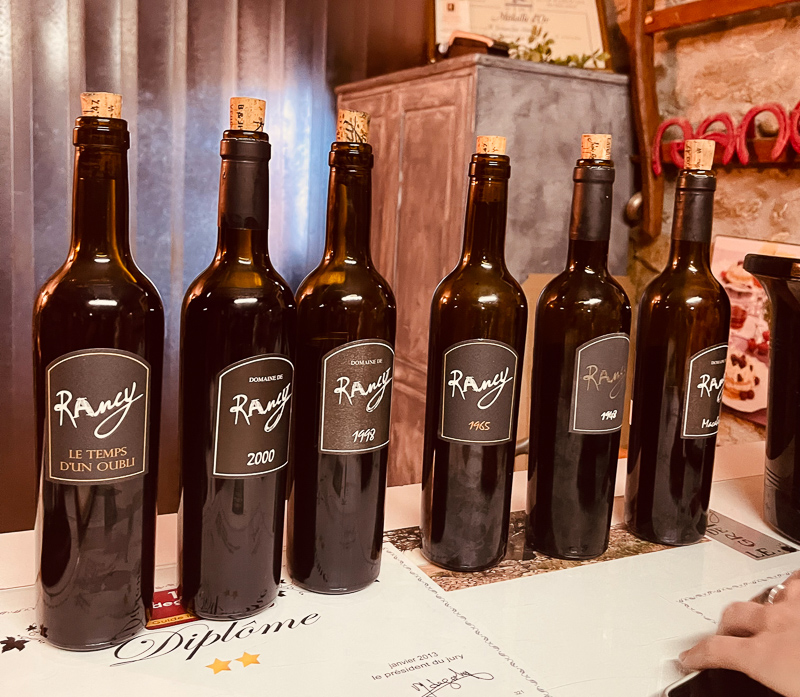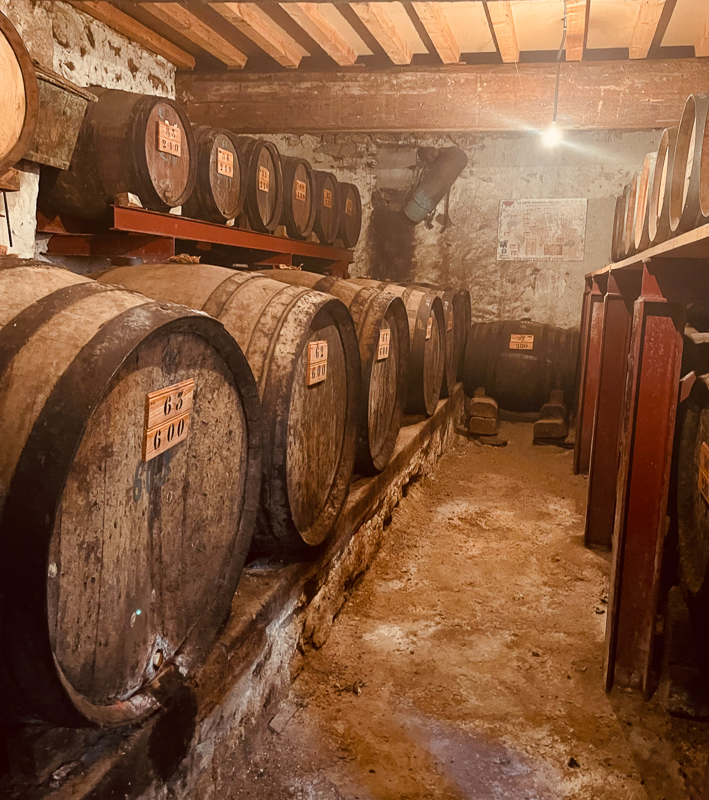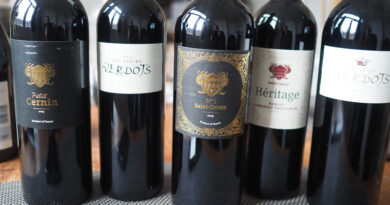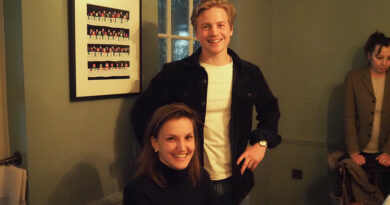Visiting the Roussillon (2) the Northern Roussillon: Maury, The Aude, Fenouillèdes and The Agly Valley
Mark Walford of Le Soula, Gérard Gauby of Domaine Gauby and Brigitte Verdaguer of Domain Rancy are interviewed by Lisse Garnett and a selection of their respective wines reviewed by Jamie Goode.
Fifteen thousand euros will still buy you an acre of aged vines in Northern Roussillon, a region rich with historical wineries and sizeable start-ups. I touched on this diverse region in Part 1 of this Roussillon series, but this is a magical place that requires more detail.
Le Soula
St Martin-de-Fenouillet
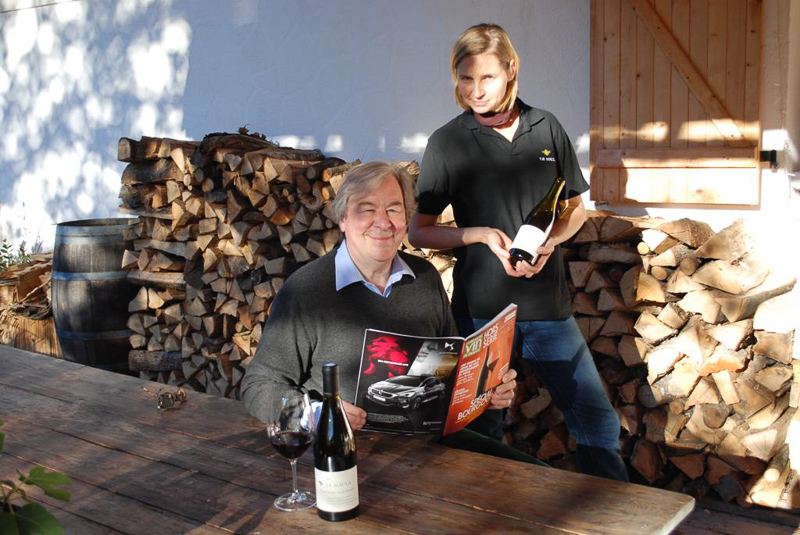
West of Maury, at higher altitude and some 25 miles inland, lies Le Soula in the upper Aude Valley. This is border country, where heat is tempered by altitude and the rocky ravines of the Eastern Pyrenees deliver dramatic vistas. This also marks the limit of the Côte du Roussillon Villages, though why this is the case is unclear. AOP Côtes du Roussillon is therefore the appellation, handy for allowing some international varieties. Plantings can be found as high as 660m and the land is peppered with wild fennel and herb-scented garrigue.
It was Gerard Gauby who convinced his friends Roy Richards and Mark Walford to invest in this region, having discovered an abandoned parcel of long established wizened vines on granitic soil high in the Agly Valley. At the time Richards Walford were well known importers, and among their customers were Berry Brothers & Rudd, who later purchased their business.
The two are known for their generous philanthropy, opening up the mindset of the fine wine drinker with a vinous smorgasbord of offerings far beyond the classics. Richards, for example, gave seed money to Eben Sadie of Swartland fame, buying half of his first production upfront. Championing grower Champagne in the early 1980s, these two prescient purchasers marketed their taste explorations at fair prices. Great agencies were entreated into representation face-to-face at a time when the UK trade was fat and bloated, most routinely buying from the same négociants as they had for decades. Le Pin, Jayer, Chave Hermitage, Lisini were all in the Richards Walford fold.
Certified organic and biodynamic since 2008, Le Soula (Occitan for south-facing hillside) has vines dating back to 1919. Grenache Gris, Marsanne, Roussanne, Macabeu, Vermentino, Sauvignon, Grenache, Syrah and Carignan from the best sites were bought, as well as an old village house to serve as a cellar from 2001, their first vintage. In 2008 they bought an old co-op winery further down the hillside and renovated it. In 2012 Walford bought Richards out. Wendy Wilson joined the team in 2016 and runs the property today with Mark.
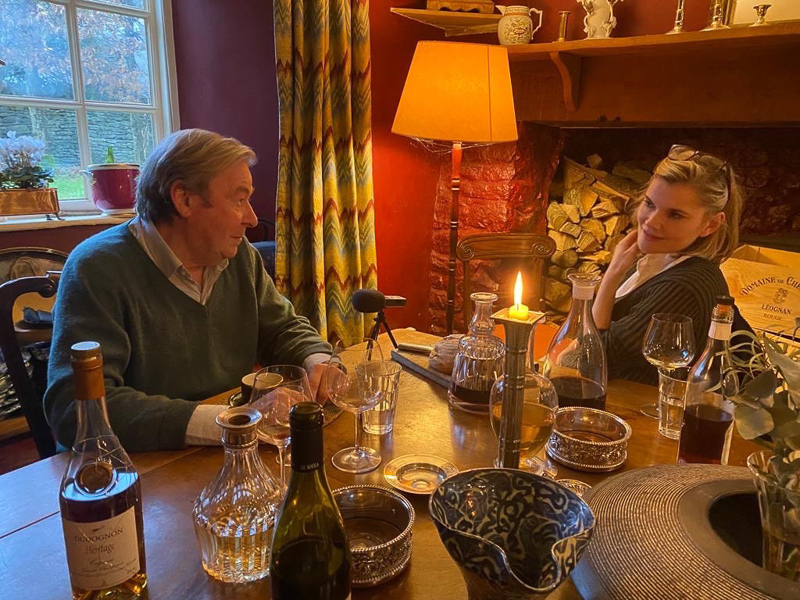
An interview with Mark Walford
Lisse Garnett (LG): How did you get started in wine? Were you young?
Mark Walford (MW): I started at my father’s table, in the time-honoured way of having glasses of wine with water in them, just to get you going. And I suppose I never looked back.
LG: So you always felt comfortable with wine. But to go from that upbringing, to the Roussillon, which is quite way out, is a real journey.
MW: That’s all due to Gerard Gauby, whose wines we were importing in the late 1980s and early 1990s. And it was because of the way we always used to do our research, which was to find a good local restaurant and see what they had on the list. There was an inspired sommelier called Marie-Louise Banyols, and we chatted to her after our lunch and she said you want to go here, and here and there. We went through the leading domaines of the Languedoc-Roussillon. In those days one regarded the two together but now we like to think of them apart. One-by-one we either eliminated them or took them on. And the one who stood out as head and shoulders above all the others was Gerard Gauby. Over the years he became a great friend and remains a great friend. He said to us that if we were to go high up into the hills we’d find vineyards where the grapes ripened but didn’t over-ripen; where the grapes always had freshness.
LG: what was the perception of the Roussillon at the time?
MW: In those days people were looking for bigger wines, but Gerard was always far-sighted, and he knew that the future lay with establishing the Roussillon as a fine wine-producing area, and that means balance. Balance means acidity and acidity means the freshness that comes from high altitudes.
LG: What was his background? How did he understand these things?
MW: He was a dyed in the wool Catalan, and as a true Catalan you grow up with vineyards all around you. The family had vineyards but I’m not sure they worked them. His father was a French rugby international and was one of the great and the good. And Gerard was probably looking for something to do; he felt he had an affinity for the vineyards, so he took more care of them and little-by-little started producing his own wines in his own image. Being intelligent, as time went by he realised where fine wine would take him. So his wines today are much finer than they were 30-40 years ago.
LG: How much do you think being a Catalan affected his choices? It is something people seem to talk about a lot in the Roussillon, along with rugby.
MW: Yes, it is. This area of France was always the part that provided the everyday drinking wines. Indeed, before that, the vermouth. The origin of our vineyard was producing the blending wines that went into the vermouths and fortified wines that southern Europe drank by the millions of litres. So it was very much part of their life and culture.
LG: And there was huge wealth in that region because this was something that was sought after. Was Gauby one of the first to look at table wines?
MW: They were always making table red and white wines. Gerard took what was going on and refined it.
LG: And he is very much into organic viticulture. He was a pioneer, surely?
MW: I think it is logic. If you have a vineyard with quality and merit, then you have to look after it as best you can, and the best way of looking after a vineyard is by working it organically or biodynamically.
LG: He’s almost on another level with his cypress trees. That’s something he has imported.
MW: He’s an intelligent man. He is lower down than we are so he has different imperatives from us. He knows that he mustn’t let his grapes over-ripen, so he needs a cooler vineyard. He’s after shade and he’s cleverly planting varieties of trees that aren’t too demanding, because one of the problems with trees is they take in moisture. The Roussillon is a very arid area, but he is planting trees that have a low demand for moisture, but which at the same time will provide shade.
LG: What made you buy into this region?
MW: Because we really believed in the potential; we could see what was being made and we could see that it had a long way to go – I wanted to take it as far as I was able to do.
LG: Did you ever consider living out there?
MW: It’s a very primitive area. If you have grown up in England you need to spice up the time you spend there with time spelt elsewhere. But we spend quite a bit of time there as it is.
LG: Are the locals quite accepting? There are so many people coming from far afield, including your own winemakers. Is it easy to integrate culturally?
MW: Without wanting to put too positive a spin on it, I think many of them see that we are bringing a bit of prosperity and fame to the area so they are quite glad of it.
LG: In terms of your development, what was the initial reception like to the wines?
MW: We were very lucky because our first vintage was 2001, which was a beautifully balanced vintage. Our 2001s hit the market and were well received, so we started off at a pace. We then had a run of more difficult vintages, but you learn as you go along.
LG: Did you start with red?
MW: No, we started with white and red. I wasn’t expecting to make any white wine at all, when we originally discussed the project. I was quite surprised to find that half of what we were going to make was white. Based on my experience of Roussillon whites at that time, it was quite a daunting prospect. But in fact our whites have been fresh and vital from the start. If anything, the vineyard became known for its whites before it became known for its reds.
LG: This is because of altitude, I suppose. But which varieties do you use?
MW: It’s a combination of altitude, acidic soils (decomposed granite and slate) and also having indigenous grape varieties. Our reds are dependent on a large part of Carignan, which is ideally suited to the southern climate, and our whites – Vermentino and Maccabeu – are also suited to the southern climate. And we have various other grape varieties, but we are based on indigenous varieties that are suited to the Roussillon.
LG: Did you buy the vineyards with old vines?
MW: Yes, everything. We haven’t added a single grape variety since we started in 2001. We have replanted but we have used varieties that were already there. We are cultivating 21 hectares at the moment.
LG: What do you make of the attention that the garrigue gets?
MW: It is all part of the atmosphere. When you are in the vineyards you feel bits of all the local herbs and the wild garlic. It is bound to have an influence on the vines that are growing among them.
LG: Where do you see the future of Roussillon wines?
MW: I see them spearheaded by perhaps half a dozen leading domaines; I see them becoming more and more sought after. Already, when we started, people were talking about the Languedoc-Roussillon. Now they are talking about them as separate entities. I see the sky being the limit.
THE WINES
Le Soula Blanc 2015 Côtes Catalanes IGP, France
This is linear and focused but also has some richness. It’s powerful and has a fine, spicy citrus peel edge to the pear and grapefruit notes, as well as some peachy richness. Quite taut and mineral despite the richness. Hints of honey too. Very fine. 94/100
Le Soula Blanc 2016 Côtes Catalanes IGP, France
Some honey and nut on the nose with yellow plum and pear. Lovely fine spiciness and notes of grapefruit and mandarin. Linear and bright with keen lemony fruit, this has a sense of precision with bright acidity on the finish. So lovely. 95/100
Le Soula Rouge 2014 Côtes Catalanes IGP, France
Sweetly aromatic with some peppery notes, some cherry and a bit of blood. Very fresh, fine and peppery with lovely red fruits. Bright and precise with nice juiciness under the fruit. Fine, peppery and tapering: this is very Burgundian in style. 96/100
Le Soula Rouge 2015 Côtes Catalanes IGP, France
Ripe but beautifully expressive with supple black cherry and blackberry fruit. It’s silky and ripe with fine-grained tannins. This has generosity and precision with some supple peppery hints. 94/100
Le Soula Rouge 2018 Côtes Catalanes IGP, France
Youthful and ripe with nice depth of sleek, focused black cherry fruit with notes of pepper and a touch of tar. There’s ripe sweet fruit here, but also lovely freshness. Very fine with a slight hint of wildness. 94/100
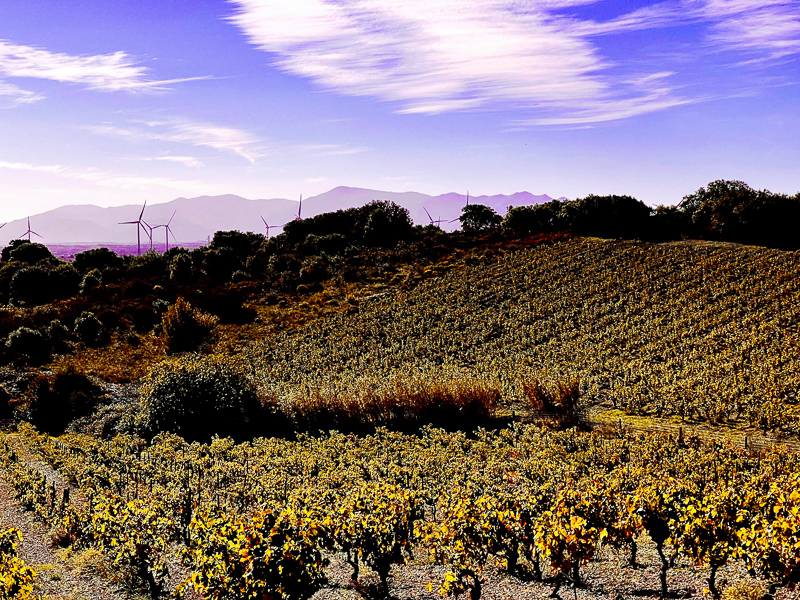
Domaine Gauby
Calce
Calce is a few degrees cooler than Perpignan. Perhaps this accounts for the cluster of sought-after progressive wineries dotted about it (Matassa, Pithon, Les Pins and Gauby). This region is peppered with limestone schist and marl, with the Mediterranean sea on one side and the Pyrenees on the other.
I imagine that visiting proud Catalan Gérard Gauby was a bit like visiting the agronomist Michel Aimé Pouget in Mendoza in the late 19th Century, known as he was for his mastery of plants. As Nat Earl (Decanter) and I followed the single-track road, curving about the rounded hills and rocky outcrops to his winery, surrounded by the scent of garrigue, I was taken right back to the Tuscan countryside where I’d worked as a teen. Gauby has planted Cyprus trees, and the architecture – with its echoes of Roman arches (they ruled here too) and stone-built barns – called to mind the countryside between Firenze and Sienna, where – just as here – wild asparagus and fennel grow.
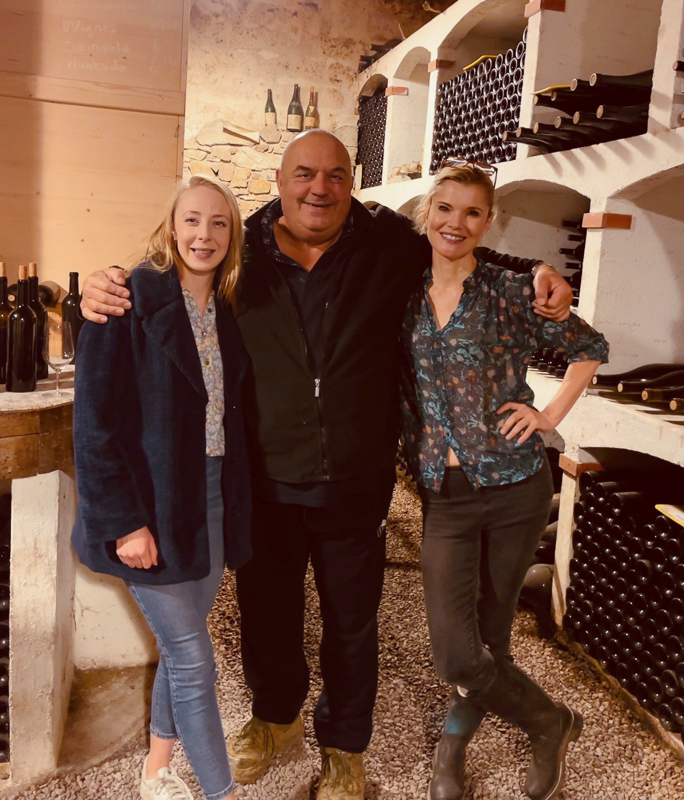
Gauby is something of a biodiversity impresario, he has designed this habitat to encourage birds who, he says, in turn eat the harmful insects that cause vine disease. It is sunny, windy and hot but surprisingly there is a minerality and a freshness to the wines he produces. A local, he has grown his three hectare family vineyard to over 40, owns 85 and works with his wife and son. His success has brought prospectors to the region and he is as positive about this human diversity as he is about the diversity of his terroir. Biodynamics, miniscule yields and hand harvesting take a financial toll, but today Gauby can charge enough for his wines to cover it.
WINES
THE WINES
Domaine Gauby Calcinaires Terroirs de Calce Blanc 2019 Côtes Catalanes IGP, France
12.5% alcohol. This blend of 40% Grenache Blanc, 30% Chardonnay (45 year old vines), 20% Macabeu (80 years old), and 10% Vermentino. Mixture of old and young vines planted on clay loam and limestone. Pressed whole bunch with minimal sulfites, then fermented in stainless steel, and aged in Stockinger foudres. This is a textured white with some sweet pear, honeydew melon and peach notes, but also some citrus brightness, as well as hints of aniseed and stony minerals. Quite exotic with its fruit profile, but also has some stony brightness on the finish. There’s a bit of creamy richness, too. Covers all the flavour bases, and shows real immediacy and appeal. 91/100
Domaine Gauby Jasse Terroirs de Calce Blanc 2019 Côtes Catalanes IGP, France
13% alcohol. 80% Muscat Petits Grains, 20% Muscat d’Alexandria, some from limestone, some from schist. 15 days maceration on skins in steel and concrete tanks. Aged 7 months in Stockinger foudres. This is beautiful. Deeply coloured, it has aromas and flavours of floral apricot, mandarin and table grapes, with a hint of raisin and some lovely spicy detail. There’s a bit of structural grip here that adds freshness, and a bit of spicy bite on the finish. Lovely detail and depth here, with exotic fruit balanced nicely by the tannins. 93/100
Domaine Gauby Calcinaires Terroirs de Calce Rouge 2019 Côtes Catalanes IGP, France
13.5% alcohol. 40% Mourvèdre, 40% Syrah 10% Grenache. This is really pure and fruit-driven with a slight stony edge to the sweet cherry and raspberry fruit. It’s quite bright with a floral quality to the fruit, and nice delicacy. So drinkable and really harmonious with a touch of liqourice and aniseed on the finish alongside the sweet supple fruit. There’s a lot to like about this wine. 92/100
Domaine Gauby Muntada 2016 Côtes Catalanes IGP, France
14% alcohol. A blend of Carignan (45%), Grenache Noir (45%), Syrah (5%) and Mourvèdre (5%), vines aged 20-120 years. This is an intense, vivid red wine with a slight cheesy, savoury, meaty edge to the bright raspberry and plum fruit, as well as a hint of blackcurrant. It’s quite savoury and meaty with a touch of olive and some phenolic characters adding savoury detail. There’s a spicy, peppery edge here. I really like it: it’s complex, savoury and intense, but avoid if you don’t like the character of Brettanomyces in your wine, because there’s quite a lot of it here. 93/100
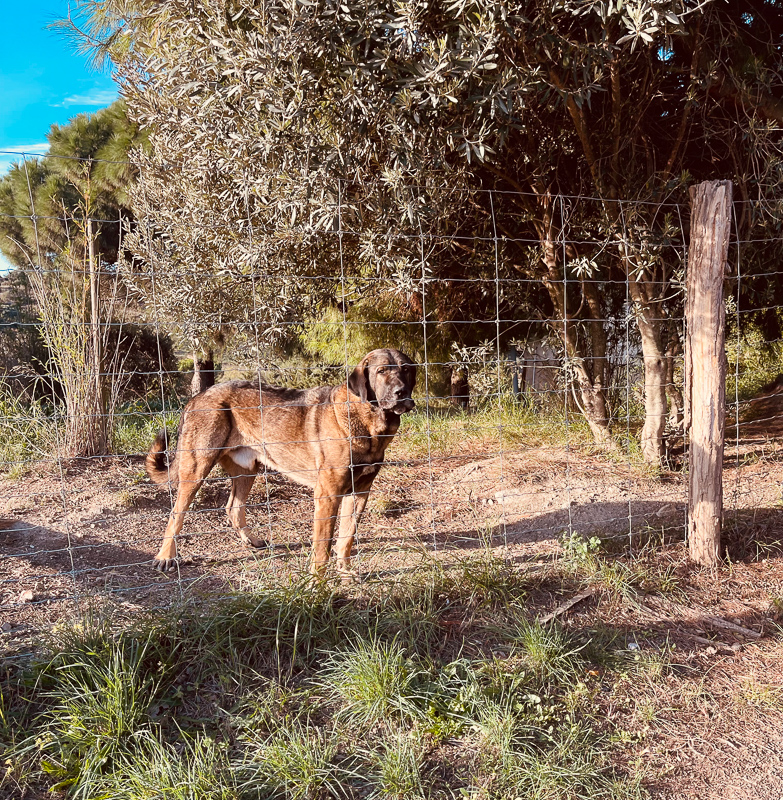
Rivesaltes
The largest VDN appellation covering 86 villages. Subdivided into Rosé, Grenat, Tuilé and Ambré, Grenache is usually the principle ingredient. Grenat must be aged for a minimum of eight months. Tuilé and Ambré are made with black and white grapes dominating each consecutively. Both are aged for a minimum of 30 months oxidatively with a minimum 45 grams of sugar per litre (likely to be much more).
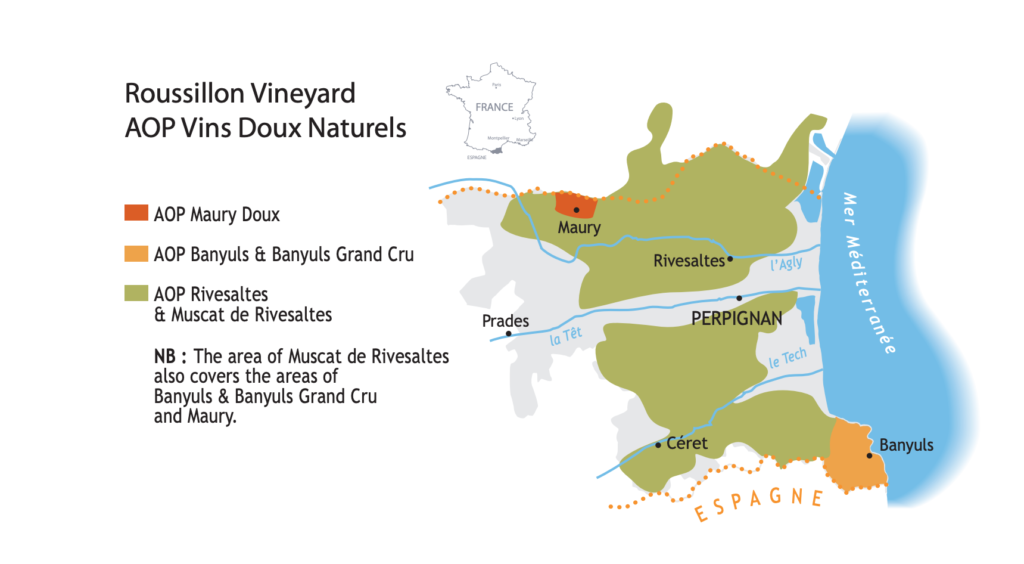
VIN DOUX NATURELS AMBRÉ – Ever declining in volume, naturally sweet as fermentation is arrested with grape spirit and often aged oxidatively. Can be made from Grenache Gris or Noir. Macabeu, Malvoisie and up to 20% Muscat. Hors d’age may be used to describe ambré and another type of VDN tuilé that have been aged over five years as most are.
RANCIO – this term refers to a style of wine that is exposed to oxygen and/or heat thereby ‘maderizing’ ie making wine in a similar style to Madeira. It’s a broad term and essentially means that it is oxidised and probably aged with heat. This can produce a complicated rich deep and varied palate featuring a fecundity of ripe or overripe dried fruit, caramel, toasted nuts and melted butter.
RANCIO SEC- Rare unfortified wine aged in barrel without ouillage or ullage – air. Oxidative and dry, similar in flavour to fino sherry.
Domaine de Rancy
Latour-de-France in the Agly Valley
Rancy wines may be found in some of the most elegant restaurants around the world. The Domaine is housed in a large but modest village terrace abutting the street, the kind you might imagine the French Resistance to have hidden in during the war. There are secret rooms and uneven brick and dirt floors, ancient advertising posters and curling lino as well as a retro 60s bar for the purpose of hazily lit tastings. This ancient, venerable yet modest estate is over a hundred years old, walking about the mismatched barrels in one of the many small cellars they have dotted about the village is a timeless experience.
The oldest barrel we spied was dated 1919 in spidery scrawl. In the garden there are numerous demijohns filled with amber liquid, camouflaged by the surrounding garrigue and eclipsed by low hanging figs. The Domaine produces magnificent, now rare, cask aged Rivesalte Vins Doux Naturels Ambré and Rancio Sec from 12 hectares of ancient Macabeu, Grenache Gris and Blanc on south facing hills of schist and limestone, farmed organically. The Verdaguers bought the Domaine in the 70s. Jean-Hubert inherited the estate from his father. Oxidative wines are principally produced from late-harvested Macabeu.
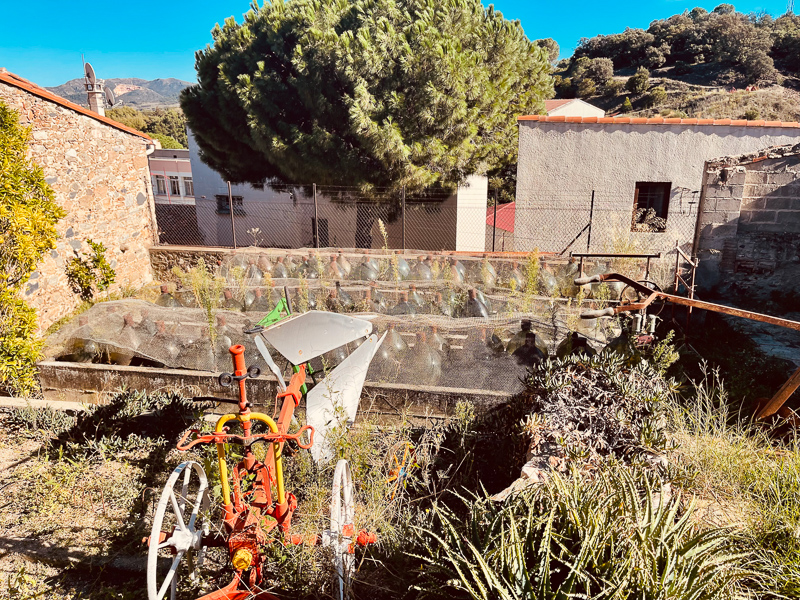
The large Rivesaltes appellation specifies the use of a specific but fairly broad section of grapes: Grenache Gris and Blanc, Carignan, Macabeau, Malvosie, the Muscats. Rancy favour almost 100% Macabeu. Fermented in barrel for between four and over a hundred years the wines are often bottled to order with eighty percent sold at the cellar door.
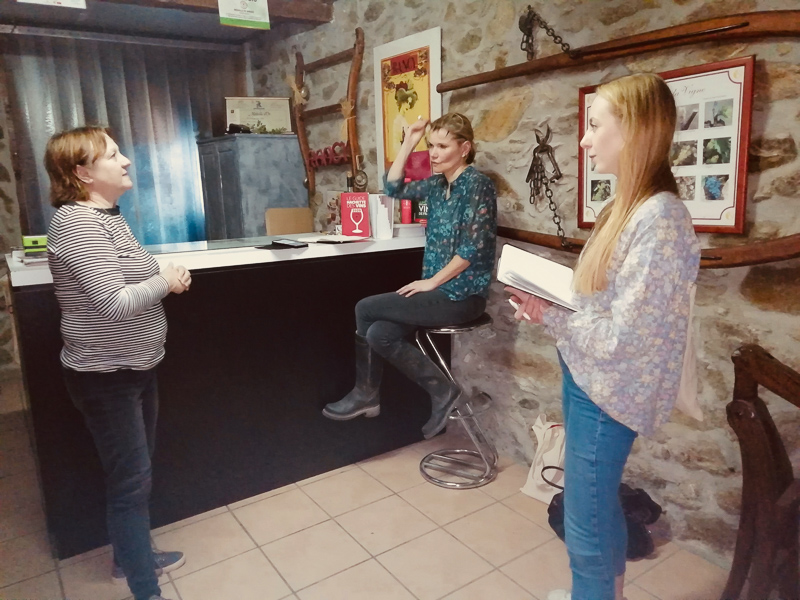
Brigette Verdaguer is warm and welcoming and one of the last outposts for VDN, she laments the trials of selling her beloved wines and thinks this is because no one knows when to drink them. Even Domaine Rancy have diversified into dry wines which are made by daughter Delphine.
They have seventeen hectares in total, five of red (100 plus year old Grenache and Carignan and 37 year old Mouvèdre) that had been sold to the co-op but which today is used to make their still reds, they also produce a still white. The white they farm is principally Macabeo with a small amount of Grenache Gris used for Rivesaltes Ambré. Yields average a miniscule 15 hectolitres per hectare.
WINES
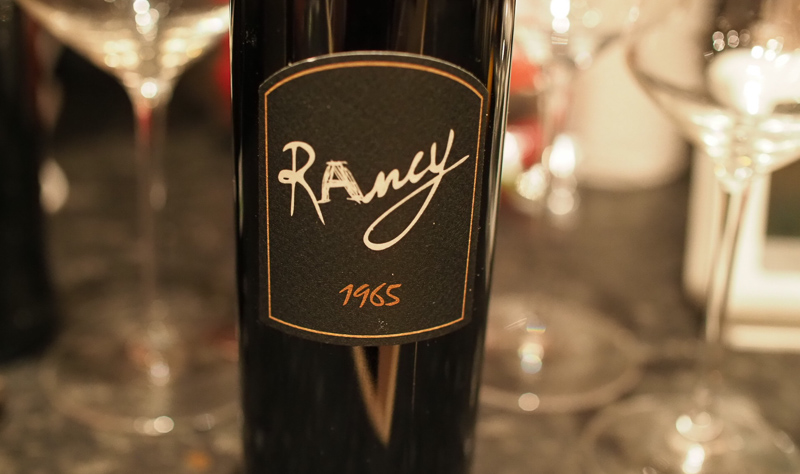
Domaine de Rancy Rivesaltes Ambré 1998 Roussillon, France
18% alcohol. This Vin Doux Naturel is complex and aromatic with powerful flavours of raisin, spice and a touch of marmalade. Very intense and rich with lots of sweetness and some notes of fig, spice, nuts and raisin all in the mix. There’s a slightly bitter finish which counters the sweetness nicely. 94/100
Domaine de Rancy Rivesaltes Ambré 1965 Roussillon, France
18% alcohol. This is profound: cherries, plums, a touch of raisin. Nice grip with some tannin evident, and juicy citrus fruit with a combination of sweet raisiny fruit as well as cherry and plum notes. Complex and intense, and really compelling. 95/100
